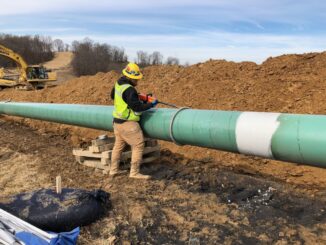
October 13, 2022
Data source: U.S. Energy Information Administration, Short-Term Energy Outlook: Winter Fuels Outlook
We expect that most U.S. households will spend more money on energy this winter than last winter, according to our latest Winter Fuels Outlook (released October 2022). We primarily forecast an increase in household energy expenditures this winter because we expect higher retail energy prices and a slightly colder winter.
We release our Winter Fuels Outlook every October as part of our Short-Term Energy Outlook (STEO). The Winter Fuels Outlook focuses on retail energy markets for the four most common U.S. heating fuels, and it includes our forecast for winter (October to March) residential energy expenditures. Forecast expenditures reflect consumption across all residential energy uses, not just home heating.
Almost 90% of U.S. homes are heated primarily by natural gas or electricity. On average, we expect wholesale prices for natural gas to be higher this winter than last winter, leading to higher retail prices for both natural gas and electricity this winter. Natural gas is the most common fuel used to generate electricity in the United States.
Changes in wholesale heating oil and propane prices pass through to retail prices much more quickly than changes in wholesale natural gas or electricity prices. We expect retail heating oil prices to be 19% higher than last winter, reflecting price pressures in the distillate fuel oil market: low inventories, low imports, and limited refining capacity. Unlike other fuels, we expect propane prices to fall slightly, by 2%, this winter.
Data source: U.S. Energy Information Administration, Short-Term Energy Outlook: Winter Fuels Outlook
We base the weather forecasts in our Winter Fuels Outlook on the National Oceanic and Atmospheric Administration’s expectation of a slightly colder winter relative to both last winter and the previous 10-year average. Colder weather contributes to our expectation for more energy consumption across all fuels and regions.
Inventories across a range of heating fuels are low, creating the possibility for high price volatility and price spikes, particularly if this winter turns out to be very cold. Because weather conditions are a key source of uncertainty in these forecasts, our outlook contains two other winter weather side cases that assume warmer or colder winter weather.
More information is available in our Winter Fuels Outlook, which we will update every month this winter at the same time as the monthly STEO release. You may also register to virtually attend our presentation of the report on Thursday, October 13, at 10:00 a.m. eastern time.
Principal contributors: Elesia Fasching, Owen Comstock, Ornella Kaze






